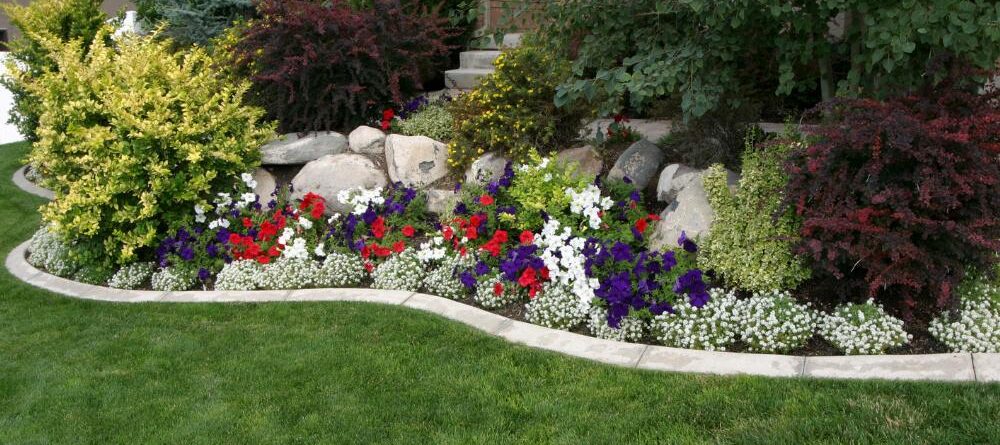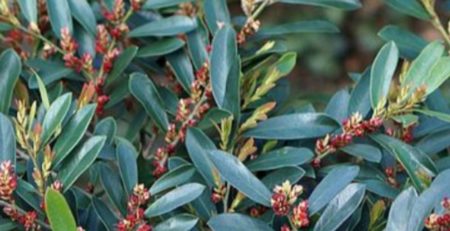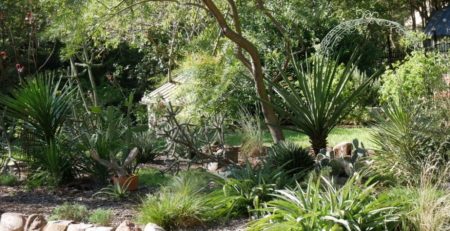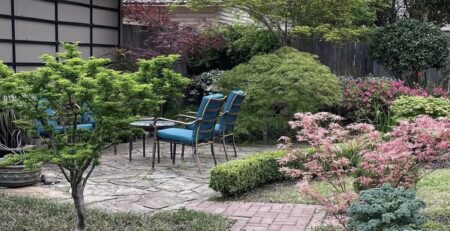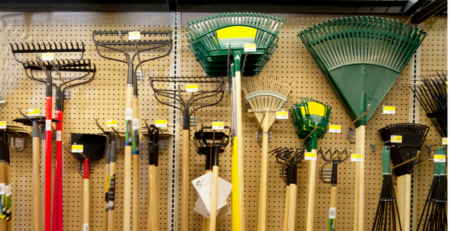Foundation Plants for DFW Homes
If you’ve lived in north Texas for more than a year or two, you know that foundation maintenance is a must for concrete slab foundations in the DFW area. But what is the right way to maintain your concrete slab? And can your foundation plantings help you maintain your foundation in an economical and efficient manner?
People who are new to Texas might be unfamiliar with our expansive clay soils and the havoc they can wreak with concrete slab foundations. According to a Home Owners of Texas, Inc. study done in 2009, billions of dollars of damage is done in the United States each year by the expansive clay soil common in the Blackland Prairie region that includes Dallas and Fort Worth.
There are four primary reasons for soil movement:
- Subsidence – soil loses its underground support
- Soil compaction – homes built on lots with uncompacted “fill” dirt
- Consolidation – settlement that occurs when fill dirt is placed on soft clay
- Moisture changes in the soil – soil shrinks or swells with changes in moisture caused by droughts, floods, routine weather changes, poor drainage, underground water, etc.
Expansive black clay soil swells and shrinks based on the amount of water it contains. During summer and/or droughts, the soil dries out and contracts – that’s when soil cracks appear. The drier the soil, the larger the cracks. During the rainy season or other wet periods, the clay soil expands.
Too much water under the house (from plumbing leaks, poor drainage or underground water) can cause the soil to “heave,” which will lift the foundation and cause damage (cracks in the foundation, sheetrock, and bricks, doors sticking, etc.) Too little water can also cause movement, which causes similar damage to the house and/or foundation.
What is the solution?
Your home’s foundation is part of a system which includes the foundation and the home, the site, the soil and the climate.
To maintain your foundation effectively, you must address all the following:
- Watering – consistent, moderate watering is the goal
- Landscaping – careful plant selection
- Drainage – good drainage is essential and should include slopes away from the house, gutters and sometimes underground drainage systems.
Can your foundation plantings help avoid problems?
It’s possible. If your foundation is moving because it has too much or too little moisture compared to when the foundation was poured, properly watered foundation plantings can help you maintain a more constant moisture level in the soil if you choose them wisely and water them correctly.
What Landscape Practices Are Best for DFW Area Foundations?
According to Dr. Steve George, Texas A&M AgriLife Extension Service Earth-Kind® Landscape Specialist, proper watering is one of the most important steps in achieving a beautiful landscape. He recommends watering all landscape ornamental plants (including containerized plants) only if the soil is dry to a depth of one inch (for adults, this is roughly to the first joint in your index finger). Be sure to move your mulch back before you try to stick your finger in the soil. In the heat of the summer, your well-adapted and fully established shrubs and trees may only need to be watered thoroughly once every two to three weeks if properly mulched.
But what is thorough watering? How can you tell when you’ve applied enough water on non-turf areas? Dr. George says that the soil is watered thoroughly if you can easily push a screwdriver six inches into the soil. If you can’t, the soil needs more water.
Dr. George also recommends using Earth-Kind® principles and practices (link to: https://dallascountymastergardeners.org/get-help/earth-kind-gardening-practices/) as your guide to plant selection, composting, mulching, and watering.
- Plant selection – Consider native and adapted plants for their attractiveness, ability to thrive in a high Ph soil, correct mature size, and color across the seasons. Be sure to use plants that have similar water needs OR be prepared to hand water those that need more water. Dr. George recommends the following books that offer good plant options that will thrive in Texas:
o Easy Gardens for North Texas
o Native and Adapted Landscape Plants: An Earthwise Guide for Central Texas
o Landscape Plants for Texas and Environs, Michael Arnold (out of print; look for it at a used bookstore)
- Composting – Work three inches of fully-finished, plant-derived compost into the soil when you first prepare the bed.
- Mulch – Cover the bed with three inches of organic mulch year-round. However, do not mulch above the top of the foundation, as this could attract termites to the wall.
- Drip irrigation – Place the drip irrigation at least six inches away from the foundation. Be sure to mulch over it. And remember that your native and drought tolerant plants may not need watering as often as your foundation does. They might require a separate drip line.
An Ounce of Prevention
When building a new home, it is critically important to:
Hire a professional engineer to design the foundation – She/he will require that a soils test be done so that the best foundation possible can be designed for the soil it will be built on.
Obtain structural warranty insurance before the foundation is poured – Foundation insurance companies will not insure foundations after they have already been poured. The insurers want to know in advance what they are getting into and will want to review and provide input on your plans before they agree to insure. (The author learned this the hard way.) Make sure your builder purchases the warranty or buy it yourself.
Keep records of the moisture level in the soil at the time the foundation was poured. Was it poured during a wet/dry season? This information will help you determine the optimal moisture level in the future.
Do not use SANDY SOILS for fill next to the foundation; use CLAYS. Compact the fill to shed water, not absorb it.
Don’t let tree roots grow under the house – Tree roots under a home can cause foundation damage in a variety of ways: contraction; expansion; desiccation (which causes the soil to lose its ability to support the foundation); roots can grow up through foundation cracks.
Your home is likely one of the largest investments you’ll ever make. To avoid interior and exterior damage, it’s imperative that your foundation is sound and doesn’t move. Do your homework, find a qualified foundation engineer and follow their recommendations.
It will save you lots of money and headaches in the long run.
Resources:
Maintenance of Existing Foundations on Expansive Clay Soils, Texas A&M AgriLife Extension Publication B-5002
Dr. Steve George, Texas A&M AgriLife Extension Service Earth-Kind® Landscape Specialist, telephone interview
Soil Issues for Residential Construction in Texas, by Home Owners of Texas (HOT) a non-profit corporation (https://www.ownerbuildernetwork.com/locations/houston/articles/common-soil-issues.pdf)
Living with Expansive Soils, by Marshall B. Addison, PHD., P.E. Consulting Geotechnical Engineer (https://www.texasinspector.com/files/Living_with_Expansive_Soils.pdf.pdf )
Texas Home Builders Warranty (example)
https://www.2-10.com/builders-warranty/texas-home-builder-warranty/

